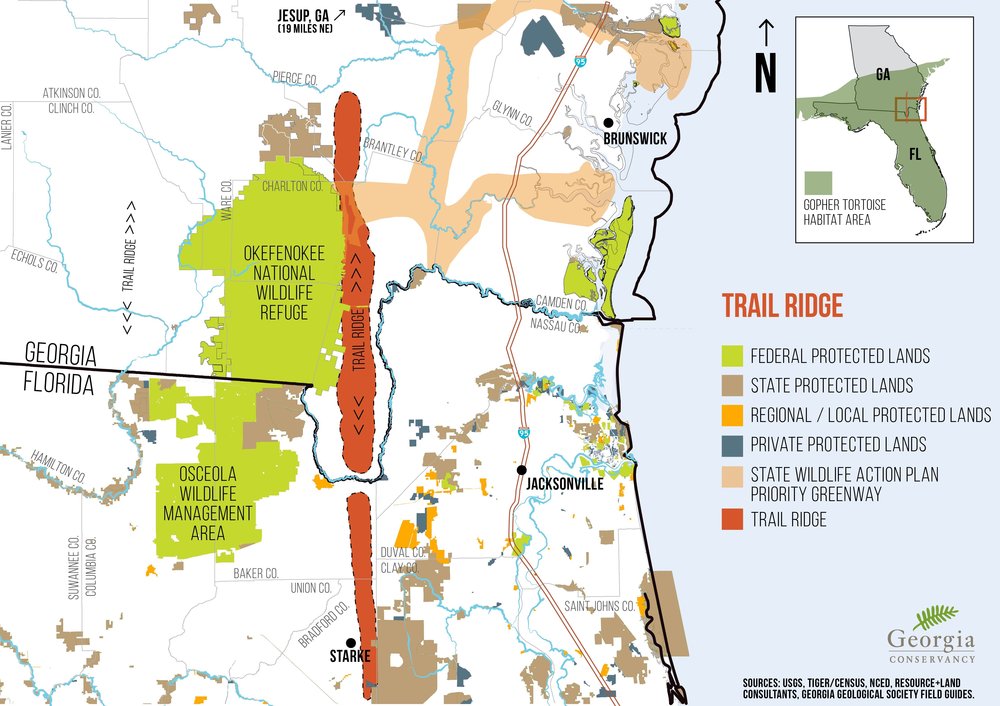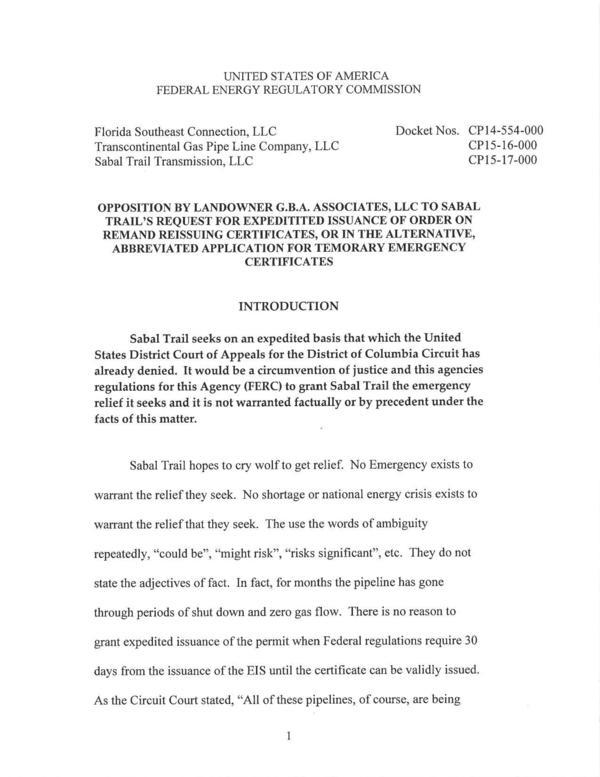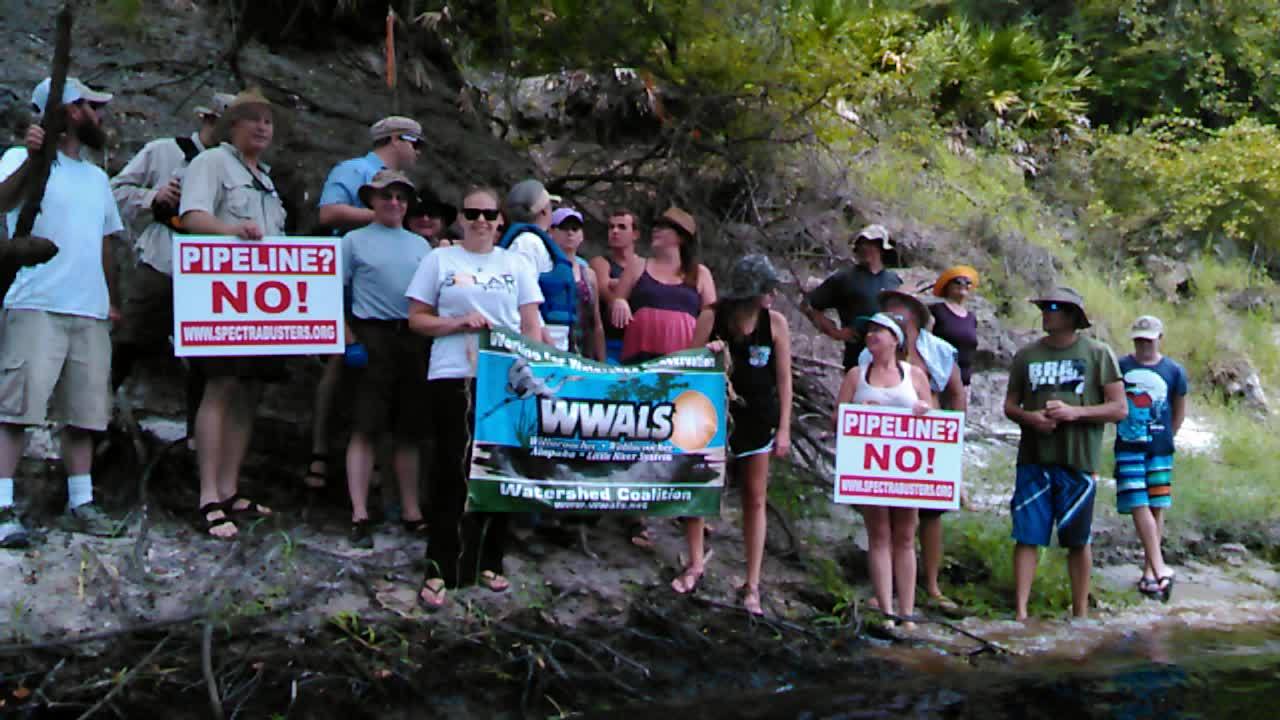Sent just now as
PDF.
You can still send in your comments today.
![[Who wants to boat, fish, bird, or hunt next to a strip mine?]](https://www.wwals.net/pictures/2019-09-12--wwals-usace-tpm/2019-09-12--WWALS-USACE-TPM-0001.jpg)
Who wants to boat, fish, bird, or hunt next to a strip mine? PDF
September 12, 2019
To: Col. Daniel Hibner, Commander, U.S. Army Corps of Engineers, Savannah District
Attention: Ms. Holly Ross, holly.a.ross@usace.army.mil
1104 North Westover Boulevard, Suite 9, Albany, Georgia 31707
Cc: Stephen Wiedl, Wetlands Unit, stephen.wiedl@dnr.ga.gov
Georgia Department of Natural Resources, Environmental Protection Division,
Water Protection Branch, 7 Martin Luther King, Jr. Drive, Atlanta, GA 30334
Re: Applicant: Twin Pines Minerals, LLC, Application Number: SAS-2018-00554
Dear Colonel Hibner,
Suwannee Riverkeeper for WWALS Watershed Coalition (WWALS) asks USACE:
- to reject the subject Application from Twin Pines Minerals (TPM), given the inappropriate location which would over the years move ever closer to the Okefenokee Swamp, which is the headwaters of the Suwannee and St. Mary’s Rivers, combined with the numerous omissions from the Application regarding the wide hydrogeologic, water quality, ecologic, and economic ramifications of the proposed mining, and the numerous other mines relevant to the proposal.
If USACE continues to process the Application, WWALS requests USACE:
- to require a complete hydrogeological assessment and report, a full Environmental Impact Statement (EIS), and an economic analysis, with all three covering all the relevant features, mines, and applications in south Georgia and north Florida, including at least those outlined in this letter.
- to accept comments until at least ninety days after all these documents are submitted to USACE and distributed to the public, preferably on USACE’s website, without requiring site visits to Albany to get them.
- to hold public hearings in Georgia and Florida for further independent input and review after sufficient time (months or years) for independent third-party review.
The proposed Charlton County, Georgia, TPM mine site is hydraulically upgradient from the Okefenokee Swamp and within close proximity to the boundary of the Okefenokee National Wildlife Refuge (ONWR), with its 600,000 visits per year for boating, birding, and fishing, with more than $60 million annual economic effects including hundreds of jobs supported directly or indirectly, plus hunt clubs surrounding the Swamp. The Swamp provides ecosystem services of great economic values, including storm protection, water quality provisioning, support for nursery and habitat for commercial fishing species; and carbon storage, plus those hunt clubs depend on the Swamp. Any pollution of the Swamp or change in surface or groundwater levels could adversely affect not only ONWR and nearby areas, but also the Okefenokee Swamp Park (OSP) near Waycross, in Ware County, GA, and Stephen C. Foster State Park (SCFSP) in Charlton County, via Fargo in Clinch County. Visitors come from Jacksonville, Florida, Brunswick and Valdosta, Georgia, and from much farther away to visit the Okefenokee Swamp. The Swamp is a treasure to the entire nation and the world.
The stigma of a strip mine next to the swamp could cause people to turn away, taking their dollars with them. Who wants to boat, fish, bird, or hunt next to a strip mine?
Continue reading →
![[Okefenokee Swamp sign at I-75 exit 16.]](https://www.wwals.net/pictures/2020-05-22--wwals-vdt-deadlines-tpm-usace-vld-ga-epd/crop-oke-sign.jpg)

![[U.S. Rep. Al Lawson to USACE]](https://www.wwals.net/pictures/2020-02-13--al-lawson-usace-tpm/Lawson-to-EPA-letter.jpg)

![[Closeup]](https://www.wwals.net/pictures/2019-11-14--gwc-dd-tpm/20191114_143439.jpg)
![[TPM Equipment closeup, Wayne Morgan]](https://www.wwals.net/pictures/2019-10-05--equipment-tpm/WAM_0876.jpg)
![[Public Notice: 20,338 comments]](https://www.wwals.net/pictures/2019-09-12--wwals-usace-tpm/SAS-2018-00554-Charlton-0912-SP-HAR-0001.jpg)
![[Who wants to boat, fish, bird, or hunt next to a strip mine?]](https://www.wwals.net/pictures/2019-09-12--wwals-usace-tpm/2019-09-12--WWALS-USACE-TPM-0001.jpg)
![[About OSP]](https://www.wwals.net/pictures/2019-08-22--okefenokee-swamp-park-tpm-usace-comments/2019-OSP-Twin-Pines-Mineral-Mining-Permit-Application-Comments-0001.jpg)


